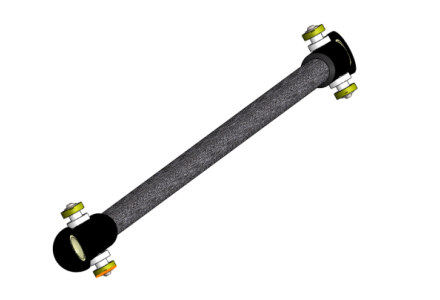As the fastest type of robot, delta robots have a wide range of applications across various industries and production lines, significantly improving production efficiency and reducing overall costs. Among the many applications, the use of robots for wet wipe lid capping has already reached a considerable scale. Such applications not only require robots to have functions like vision recognition and conveyor belt tracking, but also place high demands on the robot's running speed, walking trajectory, and other aspects. This serves as a comprehensive test for the robot's capabilities. The BAT800-S3 robot introduced by Robotphoenix performs exceptionally well in this regard, offering a huge advantage over its industry peers.
The BAT800-S3 robot has the following major advantages:
01 Outstanding motor and reducer configuration
The selection of motors and reduceres is an unavoidable issue for any robot. The quality of this pairing not only affects the robot's performance but also directly impacts energy consumption. A poor combination may lead to risks such as low performance, reduced lifespan, increased procurement costs, and excessive energy consumption. The BAT800-S3 robot from Robotphoenix has undergone extensive data calculations and multiple practical tests comparing different motor and reducer configurations. This process ensures that, while maintaining optimal performance, the torque and speed of the servo motor are both within the ideal operating range. This maximizes the servo motor’s capabilities, avoiding the "one-legged" operation mode where only torque or speed is fully utilized, thereby reducing power consumption. As a result, the servo motor and reducer are optimally configured for maximum efficiency.


02 High rigidity and uniform strength upper arm design
The upper arm is one of the key components of a Delta robot, and its quality significantly impacts the robot's overall performance. Currently, there are two popular structural types on the market: carbon fiber bonding and alloy one-piece casting/machining.
The advantage of a carbon fiber upper arm is its lightweight, which reduces the motor load. However, its downside is the complex manufacturing process, difficulty in maintaining precision, and somewhat lower rigidity. On the other hand, a metal one-piece structure has the disadvantage of being heavier but offers better rigidity, especially when it comes to withstanding shock forces during high-speed movements. Some manufacturers use a metal one-piece upper arm, but experts can easily identify that it only meets the basic size requirements, still falling short of an excellent design.
Robotphoenix's BAT800-S3 robot features an upper arm made from aerospace-grade aluminum alloy. The structure has undergone finite element analysis and is designed based on the principle of uniform strength. This ensures there are no weak points in the overall structure, while also minimizing the weight of the components. The design truly adapts to the high-speed, high-impact operating conditions of a Delta robot, which is crucial for maintaining end-effector response ability and precision during motion.

03 Lightweight end-effector components, enhanced effective load capacity
The weight of the moving platform and lower arm, particularly at the end closest to the moving platform, has a crucial impact on the robot's performance, especially during high-speed operations. The lighter this part is, the faster the robot can move under the same load, or, at the same speed, the robot can carry a greater load.
For the BAT800-S3 robot, Robotphoenix uses aerospace-grade aluminum alloy combined with a hollow structure for the moving platform, and a carbon fiber and ultra-light, high-rigidity plastic material for the lower arm. This design reduces the weight to the maximum extent while maintaining rigidity, resulting in a 30% weight reduction compared to previous models. This significant reduction in weight greatly enhances the robot's effective load capacity.


With the integration of the above features, Robotphoenix's BAT800-S3 robot has seen a significant performance enhancement, reaching a leading position domestically. Unlike some brands that focus solely on achieving fast speeds for visual effect, Robotphoenix's product not only excels in speed but also ensures "precision" and "stability." It guarantees accurate motion trajectories, high positioning precision, and stable operation, all while maintaining high speed.
For example, in the wet wipe lid capping industry, other robots on the market typically operate at an efficiency of 60–70 packs per minute. Increasing speed beyond this point leads to problems like increased vibration and severe deformation of the glue application track. In contrast, Robotphoenix's BAT800-S3 boosts this efficiency to 100 packs per minute while maintaining stable operation, with no noticeable deformation in the glue application track. This substantial improvement has significantly enhanced the customer’s production efficiency.
 Learn More
Learn More 
 EN
EN  ja
ja  ko
ko  fr
fr  de
de  es
es  ru
ru  pt
pt  ar
ar  vi
vi  ur
ur 










